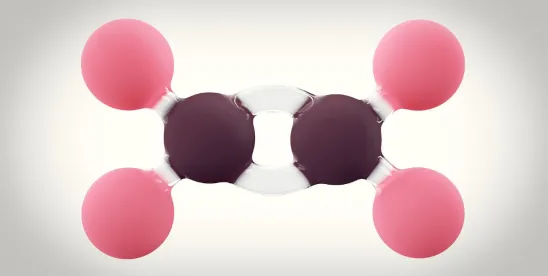While ethylene oxide (EO) has long been subject to federal regulation, the U.S. Environmental Protection Agency (EPA) has recently sharpened its focus on EO emissions. Despite publishing its plans to address EO,1 the EPA’s priorities have nonetheless shifted over time.
Currently, the rules for Miscellaneous Organic Chemical Manufacturing (MON) and EO Commercial Sterilizers are the EPA’s immediate focus. However, other industry rules due for update are sure to take center stage, including hospital sterilizers and manufacturers of polymers, resins, synthetic organic chemicals, and polyether polyols.
In a minute or less, here is what you need to know about the history and future of EO regulation.
How Did We Get Here?
Knowing how federal agencies have historically regulated EO—and a brief timeline of significant EO regulatory activities—is helpful in understanding what the future holds:
-
1977: The Occupational Safety and Health Administration first recommended an occupational exposure limit for EO.2
-
1990: Congress amended the Clean Air Act (CAA) to regulate EO as a “hazardous air pollutant.”3
-
1994: The EPA published the first National Emissions Standards for Hazardous Air Pollutants (NESHAP) concerning EO, including for Commercial Sterilization.4 Since then, EPA has promulgated NESHAPs applicable to other industries. Per the CAA, the EPA is to review and, if necessary, revise NESHAPs every eight years.
While various agencies have long regulated EO, the chemical garnered increased attention following the EPA’s 2016 Integrated Risk Information System (IRIS) Assessment, where the agency determined that EO was 60 times more toxic than previous estimates and “carcinogenic to humans.”5
Shifting Focus: EPA Adopts 2016 EO IRIS Value
Industry advocacy groups and state regulators raised concerns regarding the 2016 IRIS value soon after its publication. In December 2019, the EPA responded that it would address those concerns in the MON NESHAP due to “the robustness of the comments received,” noting that “EPA believe[d] it is reasonable to assume that...estimated risks could be lower.”6
Separately, on 8 October 2021, the EPA recognized that “despite recent monitoring efforts,” the agency does not “know what the background levels are for ethylene oxide,” and the “EPA’s current method for measuring ethylene oxide cannot detect it at all levels.”7
While technological limitations and uncertainties regarding background remain, the EPA issued the final MON NESHAP on 21 December 2022, with the 2016 IRIS value as its basis. In the EPA’s view, this finalized its “decision to use the IRIS value for ethylene oxide in the risk assessment for the 2020 MON final rule and [EPA’s] decision to reject the use of” alternative risk values.8
Despite the EPA deeming its decision final, the battle on the science is far from conclusive. Industry groups filed Petitions for Review with the U.S. Court of Appeals for the District of Columbia on 21 February 2023, challenging the EPA’s decision to continue with its 2016 IRIS value.9
Where Are We Going?
After issuing its final MON rule, the EPA has now turned to the EO Commercial Sterilizers NESHAP. On 23 November 2022, the agency announced that it submitted the NESHAP for Commercial EO Sterilizers and Fumigation Operations to the Office of Management and Budget for approval.10 Additional NESHAPs for which the regulatory review process has yet to begin include those for Hospital EO Sterilizers,11 Group 1 Polymers and Resins,12 Synthetic Organic Chemicals Manufacturing Industry,13 Polyether Polyols Production,14 and Chemical Manufacturing Area Sources.15 The EPA previously anticipated its review for all EO NESHAPs to be completed by 2024, but the EPA has not updated its projections since May 2021 (and it is already behind).16
In addition to its efforts to review and update EO NESHAPs, the EPA is undertaking air monitoring to understand EO background levels and researching methods to improve EO air monitoring efforts.17 State agencies and industry are working alongside those efforts, and recent state-level investigations have further highlighted the anomaly of background levels exceeding levels detected near emission sources, as well as the technological limitations associated with monitoring at such low levels.18
Industry observers should expect to see the EO regulatory landscape continue its rapid evolution as technology for EO air monitoring and understandings about background concentrations improve. In the meantime, however, the EPA remains on track to update existing regulations to account for the 2016 IRIS risk value.
With EO regulation and litigation presenting a risk for various companies and industries, our next and final edition will focus on insurance coverage considerations.
FOOTNOTES
1 See U.S. ENV’T PROT. AGENCY, What EPA Is Doing to Address Ethylene Oxide and to Learn More About the Chemical (last updated Dec. 22, 2022).
2 Glaser, Z.R.: Special Occupational Hazard Review with Control Recommendations for the Use of Ethylene Oxide as a Sterilant in Medical Facilities. U.S. Department of Health, Education and Welfare, Public Health Service, Center for Disease Control, National Institute for Occupational Safety and Health, DHEW (NIOSH) Publication No. 77-200, 58 pp. (1977).
3 42 U.S.C. § 7412.
4 59 Fed. Reg. 62585 (Dec. 6, 1994); 40 C.F.R. part 63, subpart O.
5 U.S. ENV’T PROT. AGENCY, EPA/635/R-16/350FA, EVALUATION OF THE INHALATION CARCINOGENICITY OF ETHYLENE OXIDE (2016).
6 84 Fed. Reg. 1570 (Dec. 17, 2019).
7 U.S. ENV’T PROT. AGENCY, EPA's Work to Understand Background Levels of Ethylene Oxide (last updated Oct. 8, 2021).
8 87 Fed. Reg. 77985 (Dec. 21, 2022).
9 See Am. Chem. Council, et al. v. U.S. EPA, Dkt. No. 23-1047 (D.C. Cir.); Huntsman Petrochem. LLC v. U.S. EPA, Dkt. No. 23-1045 (D.C. Cir.).
10 87 Fed. Reg. 71633 (Nov. 23, 2022).
11 40 C.F.R. part 63, subpart wwwww.
12 40 C.F.R. part 63, subpart U.
13 40 C.F.R. part 63, subparts F, G, H, I.
14 40 C.F.R. part 63, subpart PPP.
15 40 C.F.R. part 63, subpart VVVVVV.
16 U.S. ENV’T PROT. AGENCY, SLIDE SHOW FOR THE REGION 6 WEBINAR ON ETHYLENE OXIDE 101 (2021).
-
As of May 2021, the EPA estimated its NESHAP timeline as follows:
-
Commercial Sterilizers review to be completed in 2022; Hospital Sterilizers review to be completed in 2023; Group 1 Polymers and Resins review to be completed in 2024; Synthetic Organic Chemicals Manufacturing Industry review to be completed in 2024; Polyether Polyols Production review to be completed in 2024; and Chemical Manufacturing Area Sources review to be completed in 2024.
-
17 See supra, n.1; U.S. ENV’T PROT. AGENCY, EPA’s Work to Understand Background Levels of Ethylene Oxide (last updated Oct. 8, 2021).
18 See, e.g., GA. DEP’T OF NAT. RES. ENV’T PROT. DIV., Ethylene Oxide Monitoring Report (May 12, 2022); W. VA. DEP’T ENV’T PROT., Final Report: Ethylene Oxide Monitoring - Characterization of South Charleston and Institute, West Virginia and Surrounding Areas (Feb. 21, 2023).





 />i
/>i

